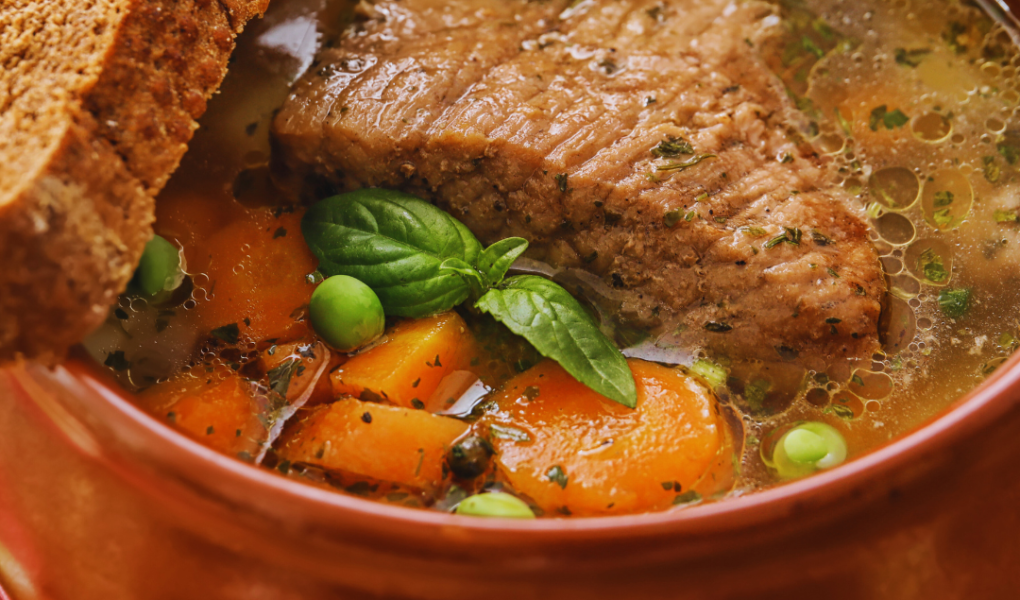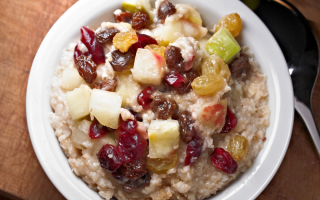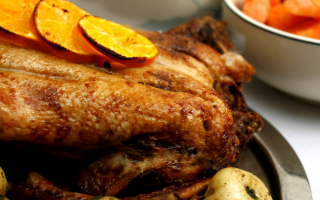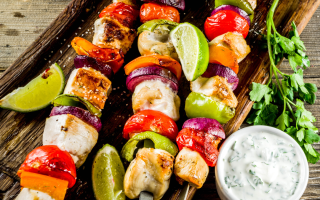One pot meals offer an efficient way to enjoy flavorful and hearty dishes without the hassle of multiple pots and pans. These meals save time on both cooking and cleanup, making them perfect for busy individuals or families. With a variety of ingredients and flavors, one pot recipes cater to diverse tastes and dietary preferences.
From comforting stews to vibrant pasta dishes, there is a one-pot meal for every palate. The simplicity of combining everything in one pot not only reduces preparation time but also enhances the melding of flavors, resulting in rich and satisfying meals.
Exploring delicious one-pot meals can inspire creativity in the kitchen. With endless combinations of proteins, grains, and vegetables, anyone can whip up a delightful dish that is both nourishing and easy to prepare.
The Benefits of One Pot Meals
One-pot meals offer numerous advantages for both home cooks and busy individuals. They simplify the cooking process by requiring minimal equipment. This feature can lead to quicker meal preparation and less time spent on cleaning.
Time-Saving
Meals cooked in a single pot reduce overall cooking time. There’s no need to monitor multiple dishes at once.
Reduced Cleanup
With only one pot to wash after cooking, kitchen cleanup becomes more manageable. This benefit is especially appreciated after busy days.
Energy Efficient
Using one pot can be more energy-efficient. It often requires less water and fewer cooking appliances, leading to lower utility costs.
Flavor Concentration
Cooking ingredients together allows flavors to meld. This results in richer and more complex tastes that enhance the overall meal.
Versatility
One-pot meals can incorporate a variety of ingredients. Proteins, vegetables, and grains can all coexist in harmony, offering different nutritional benefits.
Easy Portion Control
Portioning meals is straightforward with one-pot dishes. It allows for easy storage and reheating of leftovers, promoting waste reduction.
Incorporating one-pot meals into meal planning can streamline cooking routines while providing satisfying and delicious options.
Essential Equipment for One-Pot Cooking
One-pot cooking requires specific equipment to achieve the best results. The right tools can simplify the process and enhance flavors.
Key Items:
- Heavy-bottomed Pot or Dutch Oven: Ideal for even heat distribution. It prevents burning and allows for slow cooking.
- Lid: A tight-fitting lid retains moisture, which is essential for braising and simmering.
- Wooden Spoon or Spatula: Necessary for stirring and scraping the bottom of the pot.
- Measuring Cups and Spoons: Accurate measurements ensure proper ingredient balance.
- Cutting Board and Sharp Knife: Essential for efficient prep work. A good knife speeds up chopping while maintaining safety.
- Colander or Strainer: Useful for rinsing grains or draining excess liquid.
- Pot Holders or Oven Mitts: Protect hands from burns when handling hot pots.
Optional Equipment:
- Pressure Cooker or Instant Pot: Speeds up cooking time and enhances flavors.
- Immersion Blender: Great for pureeing soups directly in the pot.
He should select equipment based on personal cooking style and recipe requirements. Having the right tools makes the cooking experience more enjoyable and efficient.
Selecting Ingredients for a Balanced One-Pot Meal
Creating a well-balanced one-pot meal requires a careful selection of ingredients. Choosing the right proteins, vegetables, and grains ensures a nutritious and satisfying dish.
Proteins
Proteins form the foundation of a balanced meal. Opt for lean sources such as chicken breast, turkey, or fish for healthier options. Plant-based proteins like legumes, tofu, and tempeh are also excellent choices. It’s important to consider cooking times. For instance, chicken and fish typically cook quickly, while beans may require soaking or prolonged cooking. Using a combination of proteins can enhance flavor and texture.
Some examples include:
- Chicken and Quinoa: Offers a complete protein profile.
- Beans and Rice: Provides necessary amino acids when combined.
Vegetables
Incorporating a variety of vegetables adds color, flavor, and essential nutrients. Leafy greens like spinach or kale cook quickly and provide vitamins A and C. Root vegetables such as carrots and potatoes offer fiber and maintain their texture in longer cooking. Aim for a mix of textures and colors to create visual appeal and maximize nutrient intake. Vegetables should be chopped uniformly to ensure even cooking.
Key vegetables to consider include:
- Bell Peppers: Adds sweetness and vitamin C.
- Zucchini: Provides moisture and can absorb flavors well.
Grains and Starches
Grains and starches are crucial for providing energy. Options such as rice, quinoa, or barley can serve as hearty bases. Whole grains are preferable for their additional fiber and nutrients. Consider cooking times and moisture absorption when selecting grains. Quick-cooking grains like couscous can complement longer-cooking proteins efficiently.
Sample selections are:
- Brown Rice: High in fiber, supports digestion.
- Quinoa: A complete protein source packed with nutrients.
Classic One Pot Meal Recipes
Classic one-pot meals are essential for their simplicity and depth of flavor. They require minimal cleanup and can be adapted to suit various tastes and dietary needs.
Soups and Stews
Soups and stews are comforting and versatile, often featuring ingredients like meat, vegetables, and grains. A classic beef stew combines chunks of tender beef with potatoes, carrots, and onions, simmered to enhance flavors. Ingredients typically include:
- Beef (chuck or stew meat)
- Potatoes
- Carrots
- Onions
- Garlic
- Beef broth
- Herbs (thyme, bay leaf)
Another popular option is chicken noodle soup. It includes chicken, egg noodles, and a variety of vegetables, flavored with herbs. It can be made from scratch or adapted with leftover rotisserie chicken for convenience.
Casseroles
Casseroles provide a hearty option for a complete meal in one dish. They often consist of a protein, vegetables, and a starch, all baked together. A well-known example is the tuna noodle casserole, which includes:
- Canned tuna
- Egg noodles
- Cream of mushroom soup
- Peas
- Cheese (cheddar)
This dish can be topped with breadcrumbs for added texture. Another favorite is the chicken and rice casserole, combining chicken pieces with rice and vegetables, creating a dish that’s filling and easy to prepare ahead of time.
Skillet Meals
Skillet meals are quick and often packed with flavor, ideal for weeknight dinners. A chicken fajita skillet showcases sautéed chicken, bell peppers, and onions seasoned with fajita spices. Ingredients may include:
- Chicken breast
- Bell peppers
- Onions
- Olive oil
- Fajita seasoning
Served with tortillas and toppings like salsa and avocado, this meal is both colorful and satisfying. Another option is a shrimp and asparagus skillet, where shrimp are sautéed until just cooked, combined with asparagus, and finished with a squeeze of lemon.
Slow Cooker Classics
Slow cookers transform tough cuts of meat into tender, flavorful dishes. Pulled pork is a popular choice, seasoned with spices and slow-cooked until it shreds easily. Key ingredients include:
- Pork shoulder
- Barbecue sauce
- Onion
- Apple cider vinegar
Another slow cooker favorite is chili, which melds beans, ground meat, tomatoes, and spices into a hearty stew. Variations can include turkey or vegetarian options tailored to preferences. Preparing these meals in advance allows for convenient, ready-to-eat dinners.
World Cuisine One Pot Dishes
One-pot dishes offer unique flavors from different cultures, showcasing diverse ingredients and cooking techniques. The following sections explore popular one-pot meals from Italy, Asia, Latin America, and the Middle East.
Italian Favorites
Italian cuisine excels in one-pot meals, with dishes that are both hearty and satisfying. Risotto stands out as a classic, combining Arborio rice with broth, onions, and Parmesan cheese. Variations may include mushrooms, seafood, or vegetables, allowing for endless creativity.
Another notable dish is Pasta al Forno, a baked pasta dish layered with meat sauce, béchamel, and cheese. It’s a crowd-pleaser, particularly during gatherings. Additionally, Minestrone is a vegetable-packed soup simmered with beans, pasta, and seasonal vegetables, providing a nutritious option that can adapt to available ingredients.
Asian-Inspired Dishes
Asian cuisine features an array of one-pot meals that highlight rice, noodles, and bold flavors. A foundational dish is Nasi Goreng, an Indonesian fried rice that incorporates soy sauce, shrimp, and varied vegetables. It’s often garnished with a fried egg on top for added richness.
Thai Curry is another favorite, where coconut milk melds with curry paste and a mix of proteins and vegetables. The warming spices create a comforting meal. Ramen also deserves mention; it is a Japanese noodle soup that varies widely by region, often incorporating toppings like soft-boiled eggs and green onions for texture and flavor.
Latin American Specialties
Latin American cuisine brings its flair to one-pot meals, focusing on vibrant spices and fresh ingredients. Arroz con Pollo is a staple, combining chicken, rice, and a mix of bell peppers and peas cooked in seasoned broth. It’s both colorful and aromatic.
Another beloved dish is Feijoada, a black bean stew traditionally made with a variety of meats. This hearty meal reflects regional diversity and is often served with rice and orange slices. Tamale Casserole showcases layers of masa, meat, and cheese, offering a playful twist on classic tamales.
Middle Eastern Delights
Middle Eastern cuisine offers a variety of one-pot meals, known for their use of spices and grains. Pilaf, for example, is a rice dish often cooked with stock, vegetables, and meat or nuts. It serves as a savory base for many meals.
Tagine is renowned for its slow-cooked stews, typically featuring lamb or chicken combined with fruits and spices. This dish is cooked in a traditional earthenware pot, retaining moisture and flavor. Shakshuka, a dish of poached eggs in spiced tomato sauce, is popular for brunch and can easily be made in one pot.
Vegetarian and Vegan Pot Options
One-pot meals offer simplicity and convenience, making them ideal for vegetarian and vegan diets. With a wide range of flavors and ingredients, these meals can be both nutritious and satisfying.
Legume-Based Dishes
Legumes are a staple in vegetarian and vegan cooking. They provide protein, fiber, and essential nutrients. Popular options include lentils, chickpeas, and black beans. A hearty chickpea stew can be prepared by sautéing onions, garlic, and spices, then adding canned tomatoes and chickpeas. Simmering with vegetable broth enhances the flavor. Similarly, a lentil curry often includes coconut milk, carrots, and kale for a rich taste and vibrant color.
Key ingredients:
- Chickpeas
- Lentils
- Spices (cumin, coriander)
- Vegetables (spinach, carrots)
These dishes are versatile and can be adjusted to include seasonal vegetables or preferred spices.
Tofu and Tempeh Creations
Tofu and tempeh serve as excellent protein sources in vegetarian and vegan meals. Their ability to absorb flavors makes them highly adaptable. Tofu stir-fry exemplifies this versatility. It involves cubing firm tofu, marinating it in soy sauce or teriyaki, and frying it with an array of vegetables like bell peppers and broccoli. Tempeh can be used to create a savory tempeh chili. This dish combines crumbled tempeh with beans, tomatoes, and spices, offering a hearty texture.
Key ingredients:
- Tofu (firm or silken)
- Tempeh
- Soy sauce or marinades
- Mixed vegetables (broccoli, carrots)
Both options provide filling, nutritious meals while keeping prep and cleanup straightforward.
Tips for Perfect One-Pot Meals
Achieving a perfect one-pot meal relies on a few key techniques. These involve smart layering of flavors, adjusting cooking times for various ingredients, and maintaining the desired texture throughout the dish.
Layering Flavors
To create a delicious one-pot meal, layering flavors is essential. Start by sautéing aromatics like onions, garlic, or ginger in oil. This builds a solid flavor base. Next, add spices and herbs that enhance the dish. Use them at various stages; some should be added early for depth, while others can be added at the end for freshness.
Incorporating umami-rich ingredients such as soy sauce or tomatoes can elevate the meal. Adding a splash of vinegar or a squeeze of lemon juice just before serving can brighten the flavors. Remember, balancing the seasoning is crucial. Taste throughout the cooking process and adjust as needed.
Cooking Times for Different Ingredients
Understanding the cooking times for different ingredients ensures even doneness. Meat often requires more time than vegetables. For example, chicken thighs may take 30-40 minutes, while quicker-cooking vegetables like spinach need only a few minutes.
A useful strategy is to add ingredients in stages. For a classic rice dish, start with the protein and harder vegetables, allowing them to cook thoroughly. Then, add softer vegetables and grains closer to the end of the cooking time. This ensures everything retains its optimal texture and flavor.
Maintaining Texture
Maintaining texture in a one-pot meal can be tricky but is vital for a satisfying dish. Careful attention to cooking times helps, as previously mentioned. Additionally, avoiding over-stirring is important, especially with ingredients like pasta or rice. This prevents them from becoming mushy.
Using a variety of textures can enhance the meal. For example, incorporating crunchy elements like nuts or crispy vegetables as a topping can add interest. If a recipe calls for simmering, consider reducing heat towards the end of cooking to allow flavors to meld without losing firmness in the components.
Adapting Recipes for One-Pot Cooking
Adapting recipes for one-pot cooking requires careful consideration of ingredients and cooking methods. It helps to focus on flavors that meld well together.
Start with Base Ingredients:
- Choose a protein (chicken, beef, tofu).
- Select vegetables that cook evenly (carrots, bell peppers).
- Include grains (rice, pasta) that can absorb flavors.
Modify Cooking Times:
- Reduce cooking times for ingredients that cook quickly.
- Increase liquid amounts to ensure proper cooking.
- Layer ingredients based on cooking times; add quick-cooking items later.
Balance Flavors:
- Use spices and herbs to enhance taste without overcrowding.
- Consider sauces that add moisture, like broth or tomato sauce.
- Keep acidity balanced with items like lemon juice or vinegar.
Use Appropriate Equipment:
- A sturdy pot or Dutch oven is essential.
- Ensure the chosen pot can maintain even heat.
Experiment with Ratios:
- Adjust the ratio of liquid to solids based on desired consistency.
- For creaminess, add dairy or a gluten-free alternative near the end.
By following these guidelines, one can successfully adapt traditional recipes for one-pot meals, ensuring a satisfying and flavorful result.
Storage and Reheating of One Pot Meals
To maximize the freshness of one-pot meals, proper storage is essential. Leftovers should be cooled to room temperature before storing. They can be placed in airtight containers.
Storage Tips:
- Refrigeration: Consume within 3-4 days.
- Freezing: Can be frozen for up to 3 months. Label containers with the date for reference.
When reheating, safety is crucial. Ensure food reaches an internal temperature of 165°F (74°C).
Reheating Methods:
- Microwave: Use a microwave-safe container. Stir occasionally for even heating.
- Stovetop: Add a splash of water or broth. Heat on low until warmed through.
- Oven: Preheat to 350°F (175°C). Cover with foil to retain moisture.
Avoid reheating multiple times, as it can affect quality and safety. For best results, heat only the portion needed.
Proper storage and reheating contribute to enjoying the meal again while maintaining flavor and texture.
Pairing One Pot Meals with Side Dishes
Pairing side dishes with one-pot meals enhances the dining experience. The right sides can complement flavors and add texture.
Examples of Perfect Side Dishes:
- Salads: A light green salad with a vinaigrette balances heavier one-pot meals.
- Bread: Crusty bread or garlic knots are great for soaking up sauces.
- Vegetables: Steamed or roasted vegetables add color and nutrients.
When choosing sides, consider the main ingredients of the one-pot meal. For example, a spicy stew might pair well with a cooling dairy-based side.
Tips for Pairing:
- Contrast Flavors: Use mild sides with bold main dishes.
- Texture Variety: Mix soft textures with crunchy sides.
- Seasonal Ingredients: Select sides that reflect the season.
Quick Reference Table:
| One Pot Meal | Suggested Side Dishes |
| Chicken and Rice | Cucumber Salad, Garlic Bread |
| Beef Stroganoff | Roasted Asparagus |
| Vegetarian Chili | Cornbread, Guacamole |
| Seafood Paella | Lemon Wedge, Green Salad |
These pairings can elevate the meal, making it more satisfying and enjoyable. Thoughtful combinations cater to different tastes and preferences.




